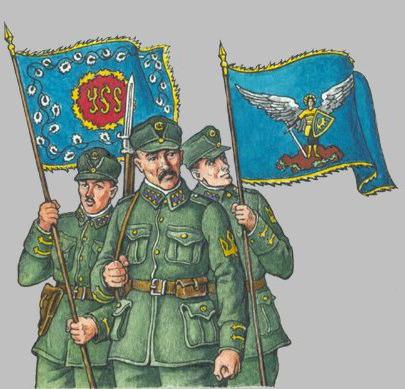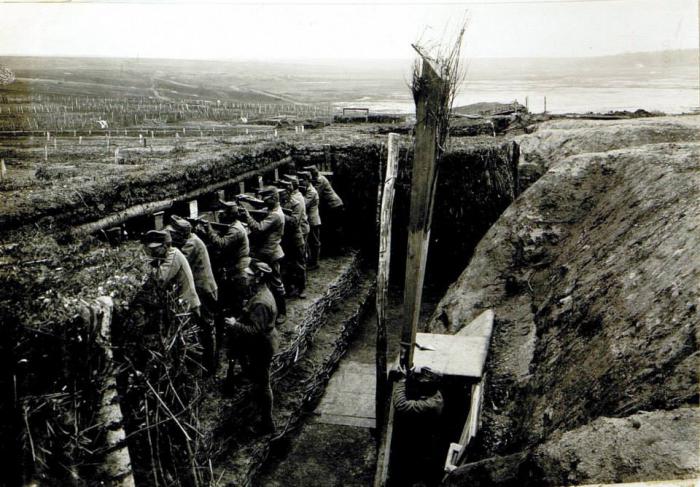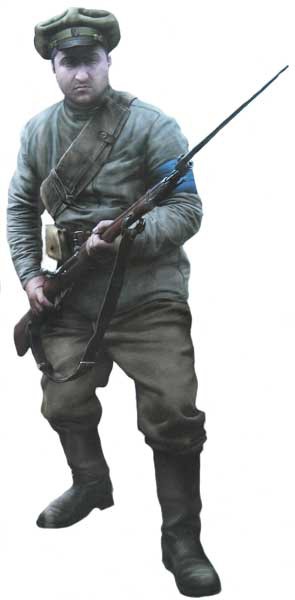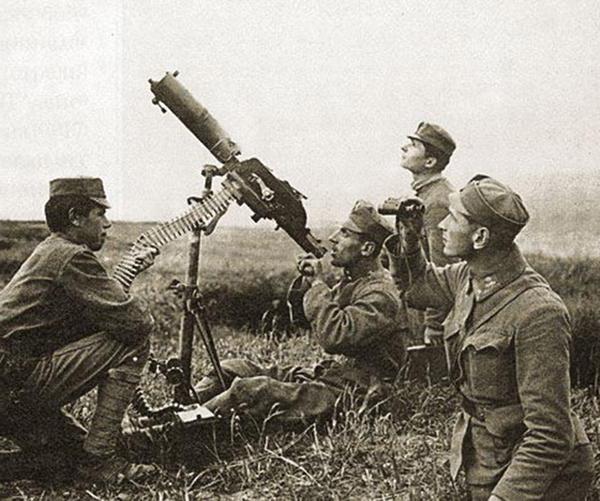One of the heroic pages of Ukraine is occupied by such warriors as Sich Riflemen - history knows them as good soldiers. These warriors were infinitely devoted to their homeland, and even in the most difficult times they continued to fight for it. The article will examine the history of the legion, as well as many interesting facts, in particular, the famous victory of Sich Riflemen on Mount Makovka.
How did Sich Riflemen appear?
The first mention of Sich Riflemen dates back to 1911. It was at this time that some of the leading Galician leaders came up with the idea of creating a paramilitary group from the youth of Galicia (then controlled by Austria). In the conditions of escalating relations between Austria and the Russian Empire, this idea was actively developed. Due to circumstances, the first such organizations secretly existed at schools or universities. A little later, the idea of fighting Russia was picked up by such movements as Sokol, Plast and Sich.

The official date of birth of Sich Riflemen can be called March 18, 1913. On this day, K. Trilevsky ensured that the first organization "Sich Archers" was approved at the official level. A little later, the same groups were organized by the Sokol partnership, as well as in the city of Lviv. But, as was to be expected, the Austrian government was preoccupied with the active actions of the Ukrainians, which began to actively impede the development of the idea, especially since young people in the camps were taught how to use weapons and other military duties. It is not known how everything would have worked out, but World War I soon broke out. After Franz Ferdinand was killed and the first hostilities began, the Ukrainian parties came together and created the "Main Ukrainian Council", he also decided to approve the Ukrainian military council, which would command the legion of Sich Riflemen.
The Legion of Sich Riflemen in the First World War
Soon, a corresponding manifesto was proclaimed, in which the Council called on young people to join the Legion and fight on the side of the Triple Alliance. This idea was supported very actively, not only by young people, but also by more mature people. Due to the influx of volunteers, call points were located in district cities, then the volunteers left for Lviv, and when the city was surrendered, they moved to Stryi.
First difficulties
However, several serious problems arose in the formation of the legion. The most acute was the lack of finance for the maintenance of the army, as well as experienced army instructors. In addition, the authorities still did not want to create a Ukrainian military unit.
But they managed to solve the problems - the people themselves collected money all over Galicia to equip, equip and maintain the legion, the authorities sent 20 foremen to the Sich Riflemen, who became instructors. But in response to the legion, instead of the existing 10 thousand people, only 2 thousand should remain. To further weaken this military unit, they were armed with discontinued weapons, which are already outdated (rifles of the Werndl system), and also did not give out military ammunition and uniforms. In order for the legion to exist, its leadership had to take an oath of allegiance to Austria-Hungary, after which the number of units was increased to 2.5 thousand people, they issued new rifles - Mauser systems, as well as uniforms and shoes. September 3, 1914 Sich Riflemen took the oath of Austro-Hungary, and a few hours later - and Ukraine, for the freedom of which they vowed to fight to the end.

Since the Austrian army surrendered Lviv, and the Russian troops were already standing in the foothills of the Carpathians, they recalled the Sich Riflemen immediately. On September 25, in a battle near the village of Syanka, a group of archers under the command of O. Semenyuk successfully fought with the Kuban Cossacks, while even capturing a Cossack horse and a lot of weapons. But, later, the Russians began to break through the defense of Syank. Two of the hundred V. Didushka, together with the Austrians, defeated the artillery battery, thereby stopping the offensive. Nevertheless, the victory of the Sich Riflemen did not give a result - on the same day Syanki was taken, and a hundred suffered losses - 5 killed and several prisoners.
Warsaw operation
Another episode in which Sich Riflemen took part was the battles near Warsaw in the same 1914, when the Russians gathered forces for a breakthrough. The result of these battles was the liberation of Przemysl and a number of settlements. A group of battle archers from the corps of General Hoffmann, who was advancing on Stryi, took part in these battles. Sagittarius distinguished themselves in this battle, as they were the vanguard of the advancing Austrian army.
After these battles, the command undertook a campaign in the Carpathians, which was conducted by German and Austrian troops. During the fighting, Russian troops retreated from the mountains, and the Austrians occupied part of Galicia. Sich archers showed examples of courage and heroism, not just saving situations that seemed seemingly hopeless. One of the glorious episodes of the Galician campaign was the battle of archers for Mount Makovka.
Sich archers on Mount Makovka
This mountain was an important position of the Austrian forces in the west of the front. On April 28, 1915, the Russian troops launched a fierce assault, which resulted in the abandonment of the mountain. Sich archers, who were then in reserve, immediately received the task of driving the enemy out of the mountain. They were raised at night and, as part of 5 hundred, were sent to a counterattack. An hour later, the peak was already occupied, and the Russian troops drove to the river. After that, part of the hundreds retreated to their positions, and two of them dug in at the top, taking up defense. On April 29th, violent assaults on the positions of the archers began. The first attempts of the enemy to occupy the mountain were stopped. On May 1, with the support of guns, the Russians occupied the right flank and defeated the archery units at the top. However, those archers, who retreated to their positions, launched another assault, in common with the Austrians. And once again they occupied the mountain.
The battles for the Makovka lasted continuously for 60 days. At that time, it became a really important defense point of the Southern Army, as it closed for Russians convenient access to the Hungarian plain. Her defense was key, as the Russians lost the chance to defeat the Southern Army. In addition, the victory of Sich Riflemen on Mount Makovka also made it possible to subsequently break through the positions of the Russian army, which fled from Galicia.
In these battles, the loss of the legion was especially severe - about 50 dead, 76 wounded, several dozen soldiers were captured. Nevertheless, their feat did not go unnoticed. The corps command admired the courage of the Ukrainians and saluted them. The battle of Sich Riflemen on Mount Makovka is an important part of the offensive operation in Galicia.
Further participation in the First World War
Among the significant battles in which the Sich Riflemen participated, history distinguishes the battle on Mount Lysonya, the Brusilovsky breakthrough, the defense of Potutor. The battles at Lyson are especially important, as the bold actions of the archers have saved almost the entire Southern Austrian army from encirclement and defeat.

In 1917, the legion was waiting for a joyful event - it was increased to the size of a regiment. The new commander of this unit was F. Kikal. The regiment was immediately transferred to Berezhany, but he did not take part in the battles, since this sector of the front was stable. February 27 in Russia began the February Revolution, which shook the government, but the war was still underway. During the battles that began in June, the legion was trapped and captured. At that time, 444 fighters and 9 officers remained from him. Subsequently, the Legion was re-reorganized, and in the new composition it reached the end of the fighting on the Zbruch River. This is where the story of Sich Riflemen in World War I ends.
The period of revolution and independence of the UPR
After the Bolsheviks seized power in Russia, an independent Ukrainian People's Republic was formed. Sich archers during these events made a trip to the Dnieper Ukraine, as they helped the young republic in the war with the Bolsheviks. The leadership of Austria and the UPR agreed on this. Then they participated in the suppression of uprisings in the Kherson region, and managed to resolve the issue without firing a shot. The authorities did not like this, as a result of which the legion was transferred to Bukovina, where it was located before the collapse of Austria-Hungary.
The legion took its last battle during the defense of Lviv, when the Polish army attacked the Western Ukrainian People’s Republic . After that, the Ukrainian Nalikaya Army was disassembled, and the legion was scattered across other units. This was the end of one of the most famous Ukrainian military units.
The composition of the legion of the OSS
When the unit had just begun its combat history, it was divided into two and a half smokers, led by smokers. Kuren was divided into hundreds, of which there were 4. In each hundred, by the same principle, there were 4 couples (platoon), and in each couple there were 4 swarms (branches) of 10-15 people. Each hundred, in the end, consisted of 100-150 people.

In addition, the legion had special units. Among them are distinguished - as auxiliary - cavalry, engineering and machine-gun hundreds. In the cavalry there were only 112 people and 4 foremen. The machine gun hundred had 4 machine guns of the Schwarzlose system, their service staff, even and hundreds of commanders. There were 4 couples in the engineering hundred. There was also a medical service, an office, a quartermaster service, as well as departments responsible for the recruitment, training and distribution of new recruits, convoys and field kitchens. Also, a special unit was allocated in the legion, which was armed with heavy weapons - mortars, grenade launchers and flamethrowers. Its task was mainly to defend positions and support the advancing.
Significance for the present
Now that Ukraine is an independent state, Sich Riflemen are one of the glorious pages of the memory of the past. In historical terms, the legion of Sich Riflemen is a unique combat unit, since it was formed exclusively from Ukrainians, and knowing the attitude of the Austrian authorities towards armed popular uprisings or ethnic groups, its creation, as well as its rather successful use in battle, can be considered surprising. The heroism shown by the Sich Riflemen is also impressive. Mount Makovka is a confirmation of this.